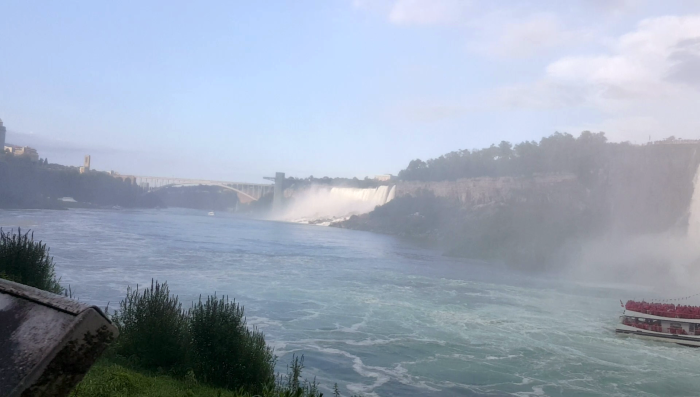In my opinion, there is nothing like traveling that will facilitate creativity in science.
Being forced to adapt to new environment and getting outside of your comfort zone can sometimes spark new ideas. Inspiration can bring about new motivation that can energize you to continue the grueling competition with overly-critical peers.
But I understand why many cannot find the time or resources to travel often. This is quite evident for PhD. level graduate students and post-docs, who often need to spend all of their time trying to get an experiment to work. I myself find it tough to travel within the U.S. due to lack of available time, and international travel was out of the question until very recently.
Despite my busy schedules however, I always wanted to answer this question: what other worlds are out there?
So my family and I traveled to Toronto, Canada for the weekend. There, we spent all of Saturday at Niagara Falls. Let me tell you, if you have never visited the Niagara Falls from the Canadian side, you’re missing out.

Now as a small background note, this mini-vacation came at a good time. I’m at the point in my PhD. career, where many graduate students feel burnt out. I’m not an exception. Although I love what I’m doing, sometimes the world of academia and science can take a toll on both the mind and body. So new experiences that can help me recharge is welcome, if not, absolutely necessary.
On our arrival, we were welcomed with this first scenery in Niagara falls (Figure 1). As part of the Journey Behind the Falls, you walk through a network of tunnels to reach this edge of a cliff. There are also boats that will take patrons very close to the waterfalls, which is highly recommended if you want to fully soak in the Niagara Falls experience.

When you turn to your right, there is an insurmountable amount of water coming down to the bottom (Figure 2). The color of the water is emerald due to the water current stripping the minerals off of the rocks. Once the emerald-color water smashes onto the surface water below, and generates an amazing amount of spray. I think some of the spray contributed to cloud formation above us. In fact, the clouds got heavily saturated and it rained twice in a span of few hours during our visit.
It’s not always fun having to walk through a downpour, but the scenery was so beautiful that I did not care. And the beauty really shines on this picture (Figure 3).

Unfortunately, it’s difficult to see the rainbow on this picture. But what’s really beautiful about this, is not necessarily the rainbow itself. Instead, it was as though Mother Nature granted me a rainbow.
It didn’t happen after the first downpour, but amazingly, it did on the second downpour. It was as if Mother Nature knew what I needed to lift up my spirits (selfish thought, I know).
Overall, the experience made me feel rejuvenated, which was something I needed to lift myself back up in the midst of rejections from publications, stress of preparing for a conference seminar, and the news that our research may run low on funding. Although this travel does not necessarily “fix” the problems I need to solve, it does provide me with new energy that I can now use to put my head down and get back to work.
What are your experiences with traveling and adventures? Do you think graduate students need to travel more often? What about professors and post-docs? Comment/like below!
